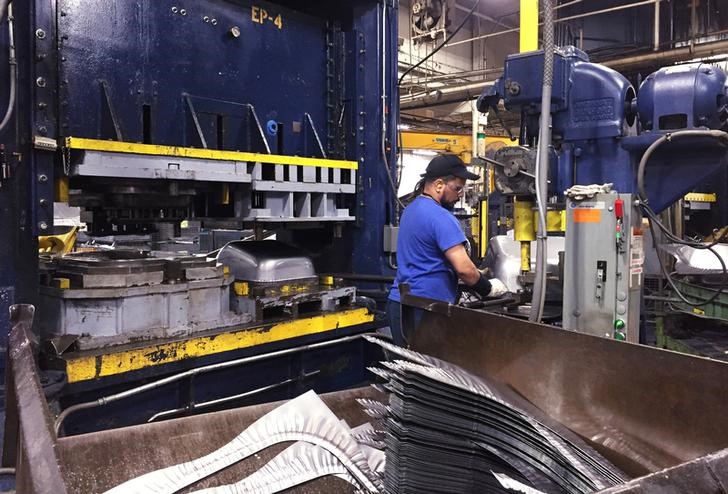By Lucia Mutikani
WASHINGTON (Reuters) - U.S. productivity grew more than expected in the second quarter as hours worked rose at their fastest pace in 1-1/2 years, leading to a modest increase in labor costs that could keep inflation muted in the near term.
The trend in productivity, however, remains weak, suggesting robust economic growth will be hard to achieve. President Donald Trump has vowed to boost annual growth to 3 percent through tax cuts, infrastructure spending and regulatory rollbacks.
"The economy is aging and the growth rate for this eight-year expansion may have maxed out unless all the king's horses and all the king's men on Trump's economics team can get some of its tax reforms, tax cuts, and untangled regulatory reforms through a moribund Congress," said Chris Rupkey, chief economist at MUFG in New York.
The Labor Department said on Wednesday that nonfarm productivity, which measures hourly output per worker, rose at a 0.9 percent annualized rate in the April-June period. First-quarter productivity was revised to show it edging up at a 0.1 percent pace instead of being unchanged as previously reported.
Compared to the second quarter of 2016, productivity increased at a 1.2 percent rate, the strongest performance in two years. Economists had forecast productivity increasing at a 0.7 percent pace in the second quarter.
With productivity rising, unit labor costs, the price of labor per single unit of output, increased at only a 0.6 percent pace in the second quarter after jumping at a 5.4 percent rate in the January-March period.
Compared to the second quarter of 2016, unit labor costs fell at a 0.2 percent rate. Coming on the heels of a recent moderation in inflation, the retreat in unit labor costs may worry Federal Reserve officials as they contemplate further monetary policy tightening.
"This recent softness in the data means that there could be less pressure for firms to pass higher costs on to consumers through price increases," said Daniel Silver, an economist at JPMorgan (NYSE:JPM) in New York.
U.S. financial markets were little moved by the data as investors focused on rising tensions between the United States and North Korea. Prices for U.S. Treasuries rose in a move to safe-haven assets, while stocks on Wall Street fell.
The dollar (DXY) was slightly weaker against a basket of currencies.
The government also revised productivity data going back to 2014, in line with recent revisions to gross domestic product figures. Those revisions showed productivity falling 0.1 percent in 2016, the first drop since 1982.
WORKER SHORTAGE
Productivity increased at an average annual rate of 1.2 percent from 2007 to 2016, below its long-term rate of 2.1 percent from 1947 to 2016, indicating the economy's potential growth rate has declined.
"To reattain 3 percent real GDP growth with the demographics the U.S. is facing, productivity growth will have to exceed its long-run average growth rate of 2.1 percent, and we are far short of attaining such a pace," said John Ryding, chief economist at RDQ Economics in New York.
Economists blame soft productivity on a shortage of workers as well as the impact of rampant drug addiction in some parts of the country. A report on Tuesday showed job openings surged to a record 6.2 million in June.
The International Monetary Fund in June cut its growth forecasts for the U.S. economy to 2.1 percent for both 2017 and 2018. The IMF said the Trump administration was unlikely to achieve its 3 percent growth goal over a sustained period, partly because the labor market is at full employment.
Other economists also argue that low capital expenditure, which they say has resulted in a sharp drop in the capital-to-labor ratio, is holding down productivity.
There is also a perception that productivity is being inaccurately measured, especially on the information technology side. Annual economic growth has not surpassed 3 percent or more since 2005. Gross domestic product expanded at a 2.6 percent annualized rate in the second quarter.
Low productivity is constraining wage growth even as companies boost hiring to maintain output.
Hours worked rose at a rate of 2.5 percent in the April-June period, the quickest pace since the fourth quarter of 2015, and followed a 1.6 percent rate of increase in the first quarter.

As a result, output per worker surged at a 3.4 percent rate, the fastest since the first quarter of 2015, after rising at a 1.8 percent pace at the start of the year.